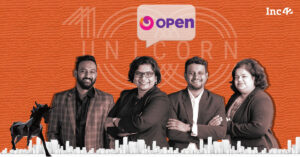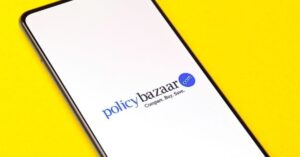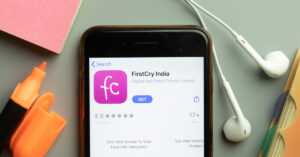From concerts to product launches, everything started going online; people began recreating their usual social environments on social media
The use of audio as a branding tool. has been on a steady rise since 2018, and its market is expected to reach INR 451,373 Cr by 2023
So clearly, indulging in new trends in Audio-based marketing seems to be a no-brainer. But is this truly a trend, or just a fad?

Living in a lockdown for the second year running really makes you yearn for the little things. Being stuck in our protective bubbles, we’re starved for human interaction. Our capability for spontaneous conversation is taking a serious hit, and in retaliation, a new trend is emerging in the virtual world.
From concerts to product launches, everything started going online. People began recreating their usual social environments on social media platforms, to bring back a sense of normality. The short-lived House Party was also an effort in the same. The latest in this line of innovations is Social Audio.
But the use of audio is not a new concept in marketing. By viewing the adaptability of voice search optimization and podcasting, spoken word audio has been on a steady rise since 2018, and its market is expected to reach INR 451,373 Cr by 2023. Vernacular podcasts are also on the rise with one report stating that the click to consume ratio for them currently stands at about 99%.
So clearly, indulging in new trends in Audio-based marketing seems to be a no-brainer. But is this truly a trend, or just a fad?
What is Social Audio
Social audio essentially operates like a group call. You can listen in on a discussion, and participate when you wish to. Basically, it’s a podcast happening in real time, but you can engage the podcaster in conversation. Over the last year, conversations beyond our household have been scarce. Using audio is a great way to break through the clutter of visual-centric platforms. So it’s really no surprise that the social audio trend has been growing.
Clubhouse is no longer the only player in the game though. Multiple industry giants are dipping their toes in this pool of possibilities. Twitter and Facebook have already launched versions for beta testing, and LinkedIn is not far behind. Some of the platforms currently in use include Discord, Leher, Fireside and more.
But before you start gunning your engines and designing Clubhouse or Backstage decks, Let’s Talk About What This Means For Branding And Marketing.
There is a wide variety of formats you can explore in Social Audio apps. Some of these include:
- Interviews
- Panel Discussions
- Debates
- Watch party
- Town Hall
- Open Mic
But this is relatively new territory, so you should proceed with caution. While the possibilities are enticing, there are a few elements that need consideration.
While Clubhouse started strong, even breaking records with their Elon Musk session, the number of downloads have reduced over the last few months. Additionally, the component of spontaneity and going live has the potential to go wrong for the brand. Tack this together with an absence of metrics and unreliable content moderation and you’ll understand why I’m cautiously optimistic about this trend.
People today are wary of sponsored content and look for authenticity, especially with Social Audio apps. Brands can gain an opportunity to humanize themselves through social audio, but it needs to be planned out carefully. That’s why even when brands are on these platforms, their conversations need to be more organic, talking about something other than “Hey! This product will blow your mind!” Listeners currently want these platforms to be a safe space for open discussions, and this experience gets marred by overtly obvious advertising messages. This is why brands must explore new ways to generate awareness.
You shouldn’t enter this media with the idea of generating enormous income; instead, use it to create relationships with your audience. The bond you build with your consumers will manifest in returns for your brand. Take the example of Former CEO and President of Focus Brands (parent company of Cinnabon) Kat Cole, who hosts weekly office hours – offering tips to budding entrepreneurs and business people trying to find their footing. A few weeks in the middle, she offered free Cinnabons to whoever sent her their address. The weeks following that, chatter around the pastry brand grew considerably.
Universal Pictures also hosted a space for the re-release of Scott Pilgrim Vs The World, which had the cast of the movie in a discussion with the director. Tickets for the screening were sold out in multiple cities including Los Angeles. So there is scope for growth, but you need to navigate it carefully. As these platforms are still in their nascent stages, you could take it one step at a time and experiment.
But bursting through with poorly concealed advertising cloaked in a “discussion” could lead to consumers losing trust in the brand, and seeing it as one that cares only about it’s interests; as opposed to its consumers’ interests.
Given the raw and genuine nature of social audio, any type of partnership or advertising needs to come through organically. Brands interested in trying out social audio should begin with
branded content. It could be sponsored or organic. People want to hear new stories and crave new content to explore. They will be receptive to discussions that talk about the inner workings of how their favorite brands became household names. For example, US-based toothpaste company Bite Toothpaste sponsored a space where their founders shared their story, garnering positive reactions from their consumer base.
Take advantage of celebrities and influencers to extend your reach. The chance for a virtual conversation with the stars will drive people towards your channel. Once they’re there, it’s up to you to swing the conversation to exactly where you want it to be. That is how Scott Pilgrim Vs The World, which at the time of release underperformed, drove ticket sales during the re-release when people gathered in droves to hear from celebrities like Aubrey Plaza, Brandon Routh and more.
The creases and issues in these platforms still need to be ironed out, which include refining AI-powered tools to better detect questionable audio content in real time, since the context and tone of the discussion need to be taken into consideration. Till then, stick to native advertising and third party discussions.








